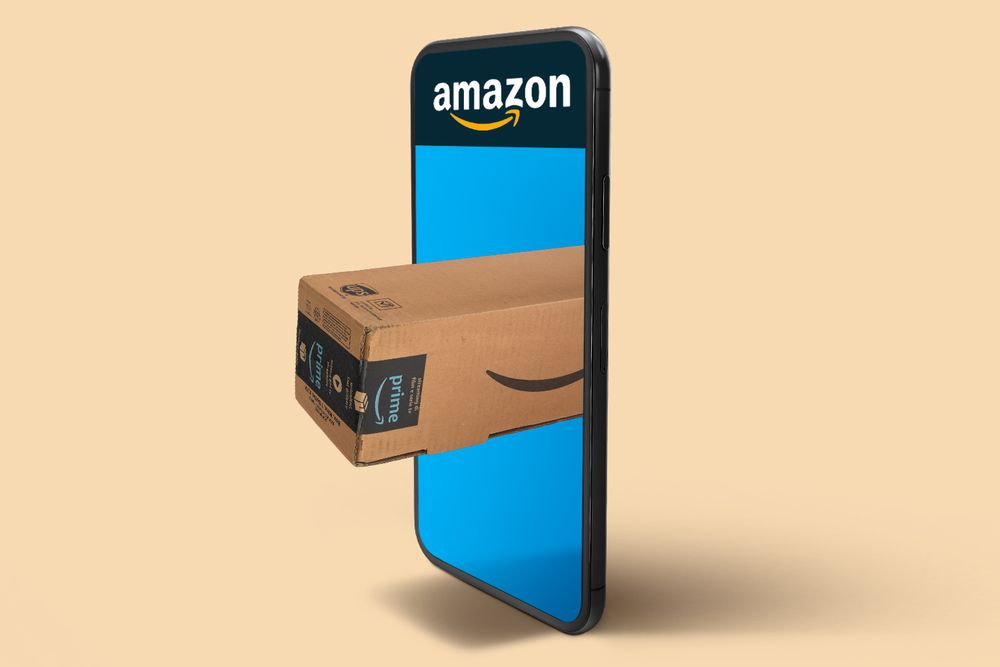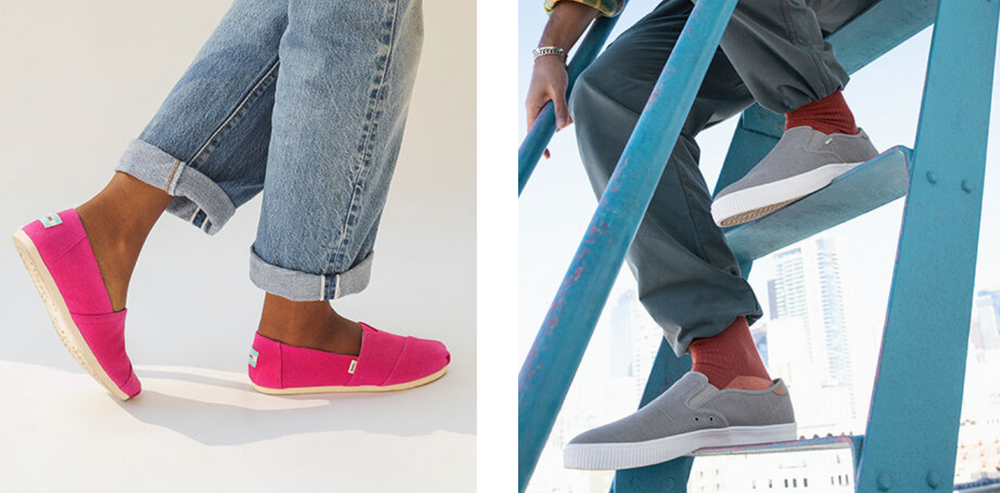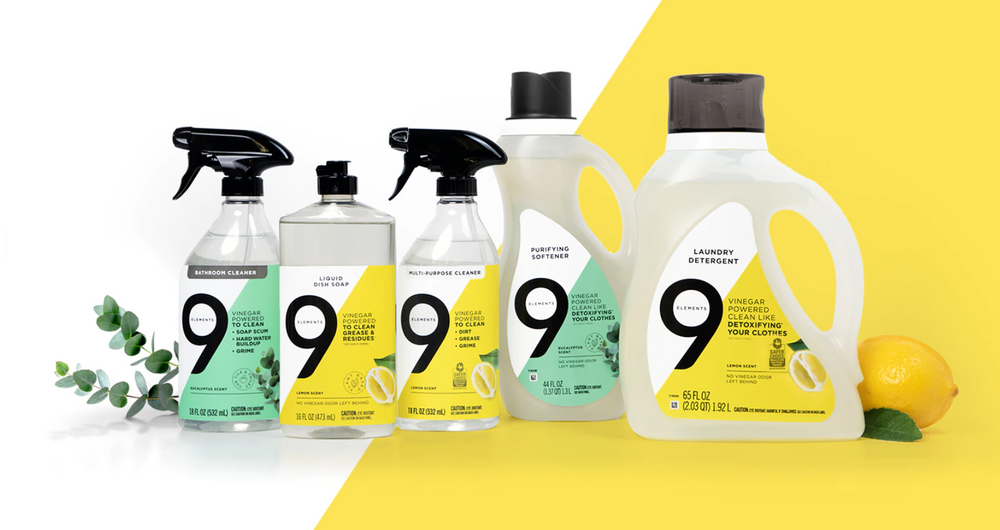|
Good afternoon. Now that anyone can leave brands an Instagram comment to request new products, snail mail may be the way to make customer demands stand out. At least, it worked for a first-grader who sent Old Navy a hand-written letter to request real pockets on girls’ pants. 
In today’s edition:
- Retailers’ ad agencies
- Toms rebrands
- New and noteworthy releases
— Halie LeSavage, Katishi Maake
|
|

Francis Scialabba
|
Another day, another metric demonstrating Amazon’s dominance in the digital shopping world. Amazon now controls 10.3% of the entire US digital ad market, up from 7.8% in 2019—and its share is expected to grow bigger and bigger. It collected $15.73 billion in US advertising revenue last year.
Amazon is known for popularizing trends retailers eventually jump on, and digital advertising is no different. A number of traditional brick and mortar chains are newly in the business of selling online ads, which they view as the next logical step in monetizing their digital assets, Collin Colburn, senior analyst at Forrester, told Retail Brew.
- Walgreens, CVS, and Home Depot—among many others—have all recently announced or expanded digitally focused media networks.
- From August 2020 to late February, Macy’s in-house media network generated $35 million.
Bucking tradition
Retailers are mainly tapping into a type of advertising called e-commerce channel advertising. In this ad format, a sponsored product appears where consumers are likely to make an impulse buy, like a retailer’s website or app.
Legacy retailers are competing for ad dollars with higher margin e-comm enterprises like Amazon, Walmart, Etsy, and eBay, Eric Haggstrom, eMarketer senior forecasting analyst, told Retail Brew.
Increasing margins: All that first-party data collected through loyalty and rewards programs works to traditional retailers' advantage.
- “They can help CPG brands advertise off-site and better target, better measure the effectiveness of their advertising using those loyalty programs and data,” Haggstrom said. “As more commerce moves online, a lot of dollars that were originally dedicated for things like end-cap displays...are now moving online.”
Looking ahead: The retailer advertising opportunity is only getting bigger. By 2024, eMarketer predicts e-comm channel ad spending will reach $38.42 billion, more than doubling 2020’s spend. And retailers watching Amazon’s exploding ad business want to grab some ad dollars for themselves. — KM
|
|

Toms
|
Toms did some sole searching and landed on a hard truth: shoppers are no longer sold on the “one for one” donation program it pioneered 15 years ago.
As part of a larger rebrand, Toms will donate one-third of its profits to grassroots charities in the US, approximately the amount it used to give away in slip-ons.
The backstory: In late 2019, after years of declining sales, Toms hinted it would walk away from donations to a more sustainable giving model. Then it was acquired by creditors.
- The pandemic hurt overall revenue, but execs told Bloomberg that e-comm accounted for more than half of last year’s sales.
More than the money...
Toms’s new look is one point in a larger plan to win over—all together now—Gen Z. In customer interviews, the brand learned younger shoppers wanted to see it support local causes.
Toms will also undertake some familiar youth-oriented rebrand initiatives, like...
- Updating its core shoe style with sneaker influences.
- Collabing on limited-edition footwear with partners like West Elm.
- Redesigning its website and logo, with input from DTC-beloved agency Red Antler.
Could it work? Brands aren’t strangers to revising their mission statements or their products in response to younger consumers’ preferences. But Tom’s has an extra challenge ahead: doing both at once. — HL
|
|

|
A lot of people are out here saying that back office finance stuff like accounting, bookkeeping, corporate cards, and the like "isn’t cool.”
Well, we have news for you, haters: Thriving back office financial systems keep your biz in business. And THAT is pretty cool.
What’s more? You didn’t start your company to be spending all your time reconciling statements and categorizing transactions.
Pilot knows a thing or two about good back office finance systems, after working with hundreds of consumer goods and retail companies. They wrote up their extensive knowledge in a section of their recent e-book, "Financial Back Office Essentials.”
In this financial back office masterclass, Pilot gives you the skinny on best practices for systems around banking, payroll, bookkeeping, budgeting, and more—you know, just the stuff that keeps your company thriving, and you working on the stuff you care about.
For best-in-class advice on the best back office financial practices, read Pilot’s e-book.
|
|

9 Elements
|
Velveeta skincare and Duolingo toilet paper were April Fools’ fakeouts. The new brands and products in this month’s release roundup are 100% real and 100% worth keeping on your future DTC-goes-wholesale radar.
In personal care...brands expect consumers to slather on plant-based, low packaging products.
- Common Heir, a plastic-free skincare line, went live yesterday. Item No.1: Vitamin C Serum sold in biodegradable capsules.
- OffCourt started with body sprays for athletes, but says more performance products are en route.
- Youthforia: It’s going out makeup for sleeping in—the USDA-approved ingredients are safe to leave on overnight.
In self care…DTC brands are expanding into relaxation aids. Brightland is entering the luxe fragrance boom with a kitchen candle (scented like its olive oils). Recess, which brews CBD beverages, created a magnesium blend to skirt patchwork CBD sales restrictions.
In home care...P&G is investing further in clean cleaning supplies after last year’s 27% sales gain in the category. Yesterday it debuted 9 Elements, a vinegar-based laundry and home cleaning line sold via DTC and mass retail. — HL
|
|
-
Target will commit $2+ billion to Black-owned businesses by 2025.
-
Snap acquired another social commerce firm to boost its shopping features.
-
Small businesses formed a national coalition to raise antitrust pressure on Amazon.
-
Signet acquired the jewelry rental platform Rocksbox.
-
Starbucks will phase out disposable cups in South Korea by 2025. In the US, Seattle stores are piloting a reusable cup program.
|
|

|
What’s the value of UGC? U will C in Bazaarvoice’s free e-book. It’s chock-full of insights into how user-generated content (UGC) can meet your customers where they are—online. Bazaarvoice surveyed 8,000+ consumers across six different markets to solve that puzzle. You can see what they learned in their free e-book here.
|
|

Francis Scialabba
|
On Wednesdays, we wear pink spotlight Retail Brew's readers. Want to be featured in an upcoming edition? Click here to introduce yourself.
St. Frank supplies homeowners with Architectural Digest-level decor. Behind the scenes, cofounder and COO Stephanie Peng keeps St. Frank ready for an “Open Door” tour.
Introduce us to St. Frank. What do you work on all day? We're building a brand with a unique aesthetic and voice in a space that was a huge opportunity even before COVID, and has since exploded: the home. I get products from our artisans into homes and get people to our site through ads and catalog, while taking care of our small but mighty team.
One thing we can’t guess about your role from LinkedIn: Because we're a small team with only a few marketers (although actively hiring!), I've run our paid spend in-house since the beginning of 2020.
Favorite project you’ve worked on: I love working on our website. It's a great intersection of design and technology and UX. We redesigned it last year, and are currently working on a headless implementation.
One retail account everyone should follow: Confidants. It’s redesigning brand discovery in this Amazon-ified world.
One emerging trend you’re bullish on: I'm really excited about all the buzz around headless. I hadn't realized how old Shopify technology was, so it's great to see some modern options for e-commerce.
Hands down, the best fast food chain is...In-N-Out! What can I say? My time in CA stuck with me.
|
|
|
If shoppers are going to return to in-store shopping, they’re going to need something fun and exciting to return to. Two British luxury brands are debuting new concepts to accomplish just that.
- Farfetch’s new London flagship is built for customers to stay longer, offering an outdoor courtyard, a makeup and styling area, a restaurant, and four floors of luxury products. (Vogue Business)
- Anya Hindmarch’s latest project is a collection of five nearby stores with their own themes: recycled plastics, pop-ups, and bespoke items, to name a few. (Business of Fashion)
|
|
|
Enjoying the newsletter? Share it with your network to take advantage of our rewards program.
When you reach 5 referrals, we'll send you this Retail Brew sticker sheet.

Hit the button below to learn more and access your rewards hub.
Click to ShareOr copy & paste your referral link to others:
morningbrew.com/retail/r/?kid=303a04a9
|
|
|
Catch up on the Retail Brew stories you may have missed.
|
|
|
Written by
Halie LeSavage and Katishi Maake
Was this email forwarded to you? Sign up here.
|
ADVERTISE // CAREERS // SHOP
Update your email preferences or unsubscribe here.
View our privacy policy here.
Copyright © 2021 Morning Brew. All rights reserved.
22 W 19th St, 8th Floor, New York, NY 10011
|
|










